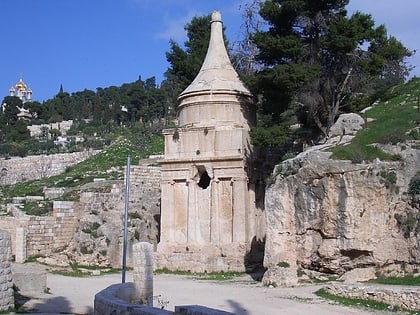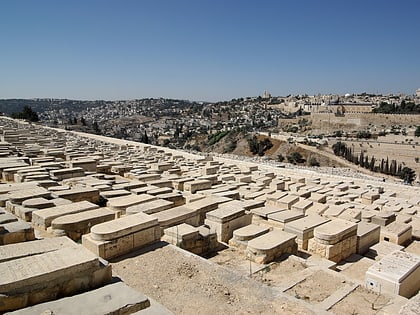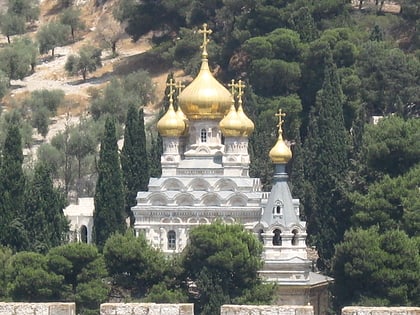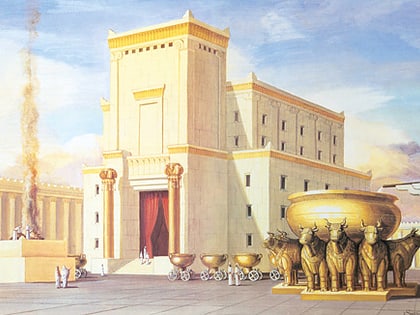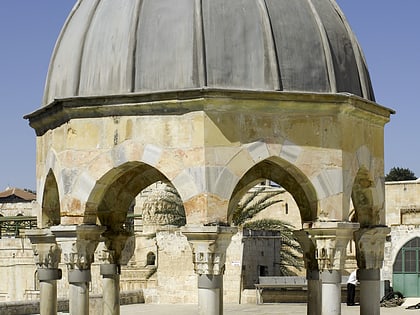Tomb of Absalom, Jerusalem
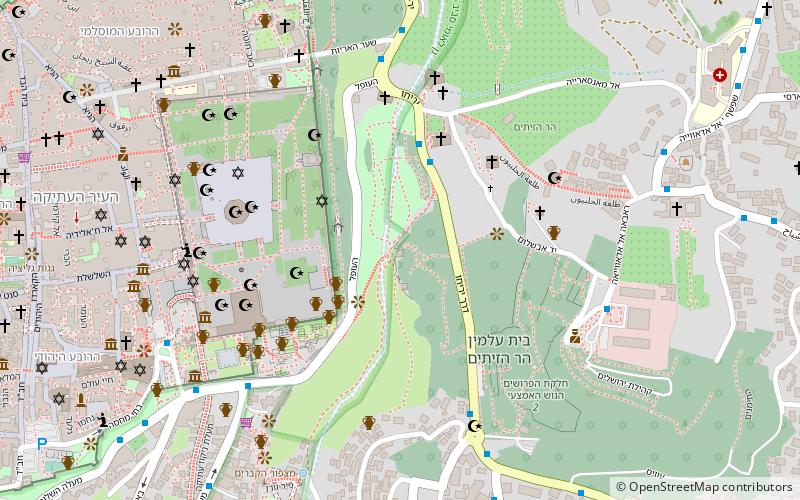
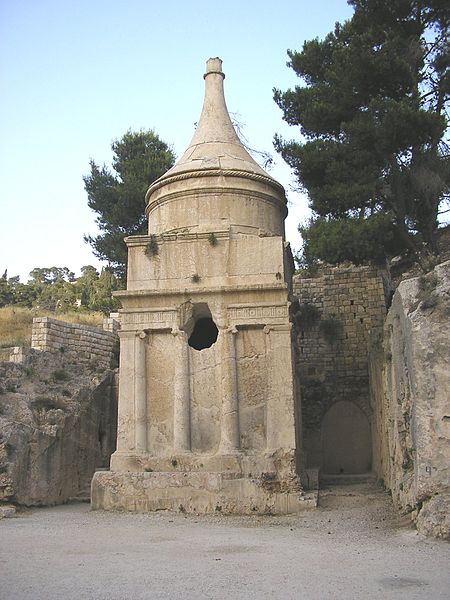
Facts and practical information
Nestled in the Kidron Valley, on the eastern side of the Old City of Jerusalem, the Tomb of Absalom stands as a testament to the city's ancient history. This monumental tomb, carved out of the solid rock face, is traditionally attributed to Absalom, the rebellious son of King David of Israel, as described in the Hebrew Bible.
Despite its biblical attribution, the actual date of the structure is uncertain, with most scholars dating it to the first century CE, making it a product of the Second Temple Period rather than the time of David and Absalom. The tomb is an impressive example of the fusion of various architectural styles, including a conical roof reminiscent of the Phoenician or Syrian monuments, a square lower part that is Hellenistic in style, and a Doric column façade that is distinctly Greek.
The structure is approximately 20 meters in height and is notable for the intricate details carved into the rock, including a frame of plant motifs that encircle the entrance. It is part of a series of rock-cut tombs in the area, which were typically built to serve as burial sites for wealthy Jewish families.
The Tomb of Absalom has become a significant landmark in Jerusalem's Valley of the Kings, not only for its historical and architectural value but also for its cultural significance. Jewish tradition once held that throwing stones at the tomb would be a symbolic rejection of Absalom's actions against his father, King David. Over time, this has led to a pile of stones at the base of the monument.
Tomb of Absalom – popular in the area (distance from the attraction)
Nearby attractions include: Temple Mount, Dome of the Rock, Al-Aqsa Mosque, Church of All Nations.
Frequently Asked Questions (FAQ)
Which popular attractions are close to Tomb of Absalom?
How to get to Tomb of Absalom by public transport?
Bus
- To go to jordan (16 min walk)
- HaNevi'im Terminal • Lines: 231 (18 min walk)
